Project Runeberg is a digital cultural archive initiative that publishes free electronic versions of books significant to the culture and history of the Nordic countries. Patterned after Project Gutenberg, it was founded by Lars Aronsson and colleagues at Linköping University and began archiving Nordic-language literature in December 1992. As of 2015 it had accomplished digitization to provide graphical facsimiles of old works such as the Nordisk familjebok, and had accomplished, in whole or in part, the text extractions and copyediting of these as well as esteemed Latin works and English translations from Nordic authors, and sheet music and other texts of cultural interest.

Scandia is a city in Republic County, Kansas, United States. As of the 2020 census, the population of the city was 344.

Leonard Gyllenhaal was a Swedish nobleman, military officer and entomologist.

Hrafna-Flóki Vilgerðarsson was a Norseman that intentionally sailed to Iceland. His story is documented in the Landnámabók manuscript; however, the precise year of his arrival is not clear. He was of Swedish origin.
Dansk Biografisk Leksikon is a Danish biographical dictionary that has been published in three editions. The first edition, Dansk biografisk Lexikon, tillige omfattende Norge for tidsrummet 1537–1814 was published in nineteen volumes 1887–1905 under the editorship of the historian Carl Frederik Bricka. The first edition, which is in the public domain is available online at Projekt Runeberg.
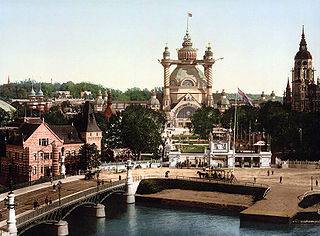
The General Art and Industrial Exposition of Stockholm of 1897 also known as Stockholm Exhibition or Stockholm World's Fair (Stockholmsutställningen) was a World's Fair staged in 1897 in Stockholm, Sweden.

"Töres döttrar i Wänge" or "Per Tyrssons döttrar i Vänge" is a medieval Swedish ballad, upon which Ingmar Bergman's 1960 film The Virgin Spring is partly based. The ballad type is found throughout Scandinavia, with variants in Danish, Faroese, Icelandic, and Norwegian. The Child Ballad "Babylon" is analogous to the Scandinavian songs.
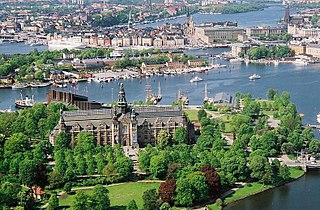
Djurgården or, more officially, Kungliga Djurgården, is an island in central Stockholm, Sweden. Djurgården is home to historical buildings and monuments, museums, galleries, the amusement park Gröna Lund, the open-air museum Skansen, the small residential area Djurgårdsstaden, yacht harbours, and extensive stretches of forest and meadows. It is one of the Stockholmers' favorite recreation areas and tourist destinations alike, attracting over 10 million visitors per year, of which some 5 million come to visit the museums and amusement park. The island belongs to the National City park founded in 1995. Since the 15th century the Swedish monarch has owned or held the right of disposition of Royal Djurgården. Today, this right is exercised by the Royal Djurgården Administration which is a part of the Royal Court of Sweden.
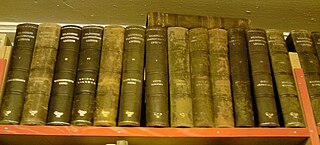
Salmonsens Konversationsleksikon is a Danish encyclopedia that has been published in several editions.
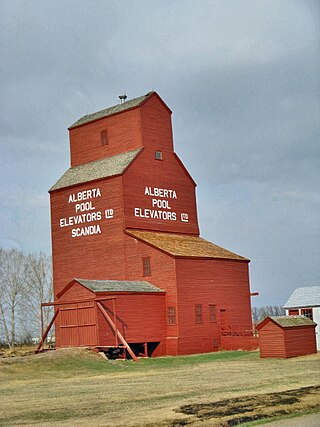
The Scandia Eastern Irrigation District Museum is an open-air museum in Southern Alberta, Canada. The museum includes a historic 1925 Alberta Wheat Pool grain elevator, Bow Slope Stockyard, and displays of how irrigation has affected the prosperity of the area. The museum is part of Eastern Irrigation District Historical Park, which also includes a blacksmith shop, barn, general store, stock yards and river ferry.

Johan August Lundell was a Swedish linguist, professor of Slavic languages at Uppsala University. He is known for his work on Swedish dialects and for developing Landsmålsalfabetet, a phonetic alphabet used in dialect research.

Ättestupa is a name given to a number of precipices in Sweden.
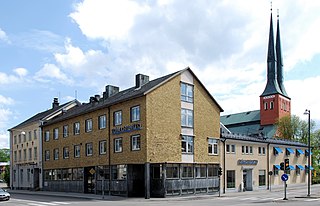
Smålandsposten is a local morning newspaper published in Växjö, Southern Sweden. Founded in 1866 it is one of the earliest newspapers in the country.

Events from the year 1873 in Sweden
Ymer is an annual peer-reviewed academic journal published by the Swedish Society for Anthropology and Geography. It was established in 1881 and published quarterly until 1965, when it converted to an annual rhythm. The journal is abstracted and indexed in Scopus.
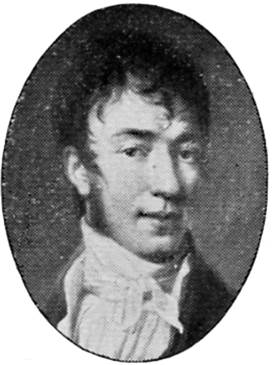
Fredric Westin was a Swedish history and portrait painter.

Olof Johan Södermark was a Swedish military officer, painter, graphic artist and sculptor. His son, Per Södermark, was also a well-known painter and lithographer.
The New Society of Letters at Lund is a scientific academy founded in 1920. The purpose of the foundation was "to promote scientific humanities research", to which younger scientists - Docents - in the humanities, theology and social sciences at Lund University would gather. The founders were the Sanskrit researcher Herbert Petersson, the folklore scholar Carl Wilhelm von Sydow, and the linguist Jöran Sahlgren, with the assistance of the historian Lauritz Weibull. The name was taken from the Royal Society of Sciences in Uppsala














